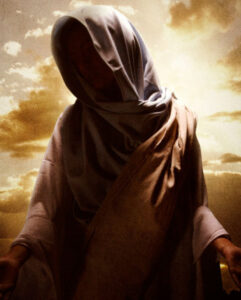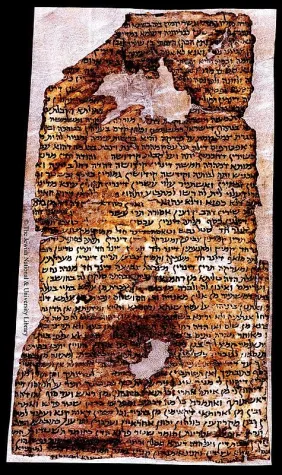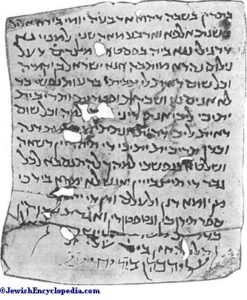Mary Was There – Beginning to End
 Mary, famed mother of Jesus of Nazareth, was the only one who witnessed from beginning-to-end the exceptional life of her son Jesus of Nazareth.[1] Like most mothers, every amazing detail about her son was memorable.
Mary, famed mother of Jesus of Nazareth, was the only one who witnessed from beginning-to-end the exceptional life of her son Jesus of Nazareth.[1] Like most mothers, every amazing detail about her son was memorable.
Mentioned twice in Luke before Jesus turned 13, the Gospel says Mary “treasured all these things in her heart.”[2] Nativity accounts of Gospels of Matthew and Luke could only come from Mary herself.[3]
As a girl living in Nazareth, population about 2000, research indicates Mary came of marriageable age at about 13 years old when was betrothed to Joseph.[4] Betrothal for Mary was no different than for any other Jewish girl…until she was visited by the angel Gabriel.
Mary’s remarkable life took only a moment to turn from ordinary to extraordinary. Angel Gabriel, the messenger of God, announced she would be impregnated by the Holy Spirit and would give birth to the Son of God, no doubt, shocking her to the core.[5]
Informed by Gabriel that Elizabeth was pregnant, Mary promptly traveled to visit her relative to share the experience. They had something in common – special pregnancies.
Elizabeth had been married for many years, but had been childless. Even Zechariah, her husband, who learned of her pregnancy from the angel, Gabriel, had still doubted Elizabeth becoming pregnant because of her age.[6]
Merely a few days pregnant, even before Mary herself experienced any physical changes from the pregnancy, Elizabeth affirmed Mary was pregnant the moment she arrived. Mary then gave a 10 verse praise of God.[7]
LK 1:42-44 “Blessed are you among women, and blessed is the child in your womb! And who am I that the mother of my Lord should come and visit me? For the instant the sound of your greeting reached my ears, the baby in my womb leaped for joy.” (NET)
Mary went back home to Nazareth three months later when it was time for Elizabeth to give birth to her son, later becoming known as John the Baptist. No other interaction between Jesus and John are recorded until Jesus was baptized.
Giving birth to Jesus in a stable in Bethlehem, not at home in Nazareth, came as a result of many incredible events that took Mary and Joseph to the hometown of King David. It was a short-lived visit because God warned them to leave due to King Herod seeking to kill Jesus and they quickly hid in Egypt before returning to Nazareth
A stark reminder their son was distinctively different from his siblings came when Jesus was 12 years old. Upon leaving the Passover celebration going back to Nazareth, Joseph and Mary assumed Jesus was in their traveling group, but could not find him when they arrived home.
Frantically searching for their son and going back to Jerusalem, they found Jesus sitting in the Temple courts with teachers asking questions and astounding them with his knowledge. Understandably his parents chided Jesus, but his response jarred their senses, not fully understanding his response:
LK 2:49 “Why were you looking for me? Didn’t you know that I must be in my Father’s house?” (NET)
When a wedding party ran out of wine, Mary knew Jesus could rescue the event. Knowing her son had special powers who could perform miracles, it suggests Jesus had done other miraculous things privately within their family.
Mary asked her son to save the marriage celebration and instructed servants to do whatever Jesus said. Not ready to publicly reveal his capabilities of performing miracles, in-spite-of being a grown adult, Jesus did as his mother asked performing the first publicly recorded miracle by turning pots of water into wine.[8]
At his home in Capernaum, Mary and her family tried to meet with Jesus, but they could not reach him because the crowd was too dense. Some people told Jesus his family was outside wanting to see him and Jesus responded saying that he considered those around him to be his family.[9]
Next mention of Mary was about three years later during the most dreadful of scenarios, all the more horrifying for a mother, when she watched her tortured son being executed by crucifixion.[10] What emotions she experienced can scarcely be imagined.
Much attention is made of Mary Magdalene’s Resurrection encounter at the tomb recognizing Jesus after he rose from the dead. Perhaps Jesus’ own mother and family were even better suited to confirm or refute that Jesus was alive again after his death on the cross.[11]
James, one of the half-brothers of Jesus, was willing to die for belief in his brother. According to Roman Jewish historian Josephus, James became a martyr for preaching about Jesus:
“…he [Ananus] assembled the Sanhedrin of judges, and brought before them the brother of Jesus, who was called Christ, whose name was James, and some others, [or, some of his companions.] And when he had formed an accusation against them as breakers of the law, he delivered them to be stoned…” – Josephus, Antiquities of the Jews [12]
From her miraculous conception, the circumstances of his birth, many of his miracles, his crucifixion to seeing him alive again, Mary was the sole witness from the beginning to the end of the life of Jesus of Nazareth. Some of the incidents have been substantiated by sources outside of the Gospels – Roman historians and Judaism and through astronomy, and archeology.
Does Mary’s witness account provide believable evidence attesting to his life?
Updated March 23, 2025.
This work is licensed under a Creative Commons Attribution-NonCommercial-NoDerivatives 4.0 International License.
REFERENCES:
[1] Luke 1:2.
[2] Luke 2:19; 2:51. CR Luke 1:66. NASB. NASB, NIV. Luke 2:19.
[3]Northcote, James Spencer. “The Life of Mary in the Gospels.” 1856-60. <https://www.salvemariaregina.info/SalveMariaRegina/SMR-182/LifeMary14.htm> “Who was With Jesus When He Ascended?” Pathos.com. 2017. <https://www.patheos.com/blogs/christiancrier/2015/12/15/who-was-with-jesus-when-he-ascended> “Mary.” SquareSpace.com. image. 2013. <http://static1.1.sqspcdn.com/static/f/498894/21585377/1357687844620/Mary-Mother-of-the-Christ-Myriam-Christian-Movie-Christian-Film-DVD-Odeya-Rush-Peter-OToole-Ben-Kingsley1.jpg?token=HQ84OGWo1X3XauVE74a6xoLFvXY%3D>
[4] “Nazareth.” New World Encyclopedia. 2018. <https://www.newworldencyclopedia.org/entry/nazareth> “Nazareth.” Jewish Virtual Library. 2019. <https://www.jewishvirtuallibrary.org/nazareth> Kiddushin 3b. Sefaria. <https://www.sefaria.org/Kiddushin.3b?lang=bi> “Marriage.” Judaism 101. <http://www.jewfaq.org/marriage.htm> “Majority.” Jewish Encyclopedia. 2011. <http://jewishencyclopedia.com/articles/10310-majority>
[5] Luke 1:26-35.
[6] Luke 1:39-45.
[7] Luke 1:39-55; CR Luke 1:8-25, 57-66.
[8] John 2:1-11. CR John 4:46.
[9] Matthew 12:46-50; Mark 3:31-34, Luke 8:21.
[10] John 19:25. CR Luke 23:49.
[11] Acts 1:12-14. CR John 2:12;
[12] Josephus, Flavius. Antiquities of the Jews. Trans. and commentary. William Whitson. The Complete Works of Josephus. 1850. Book XX, Chapter IX.4. <http://books.google.com/books?id=e0dAAAAAMAAJ&printsec=frontcover&source=gbs_ge_summary_r&cad=0#v=onepage&q&f=false>



